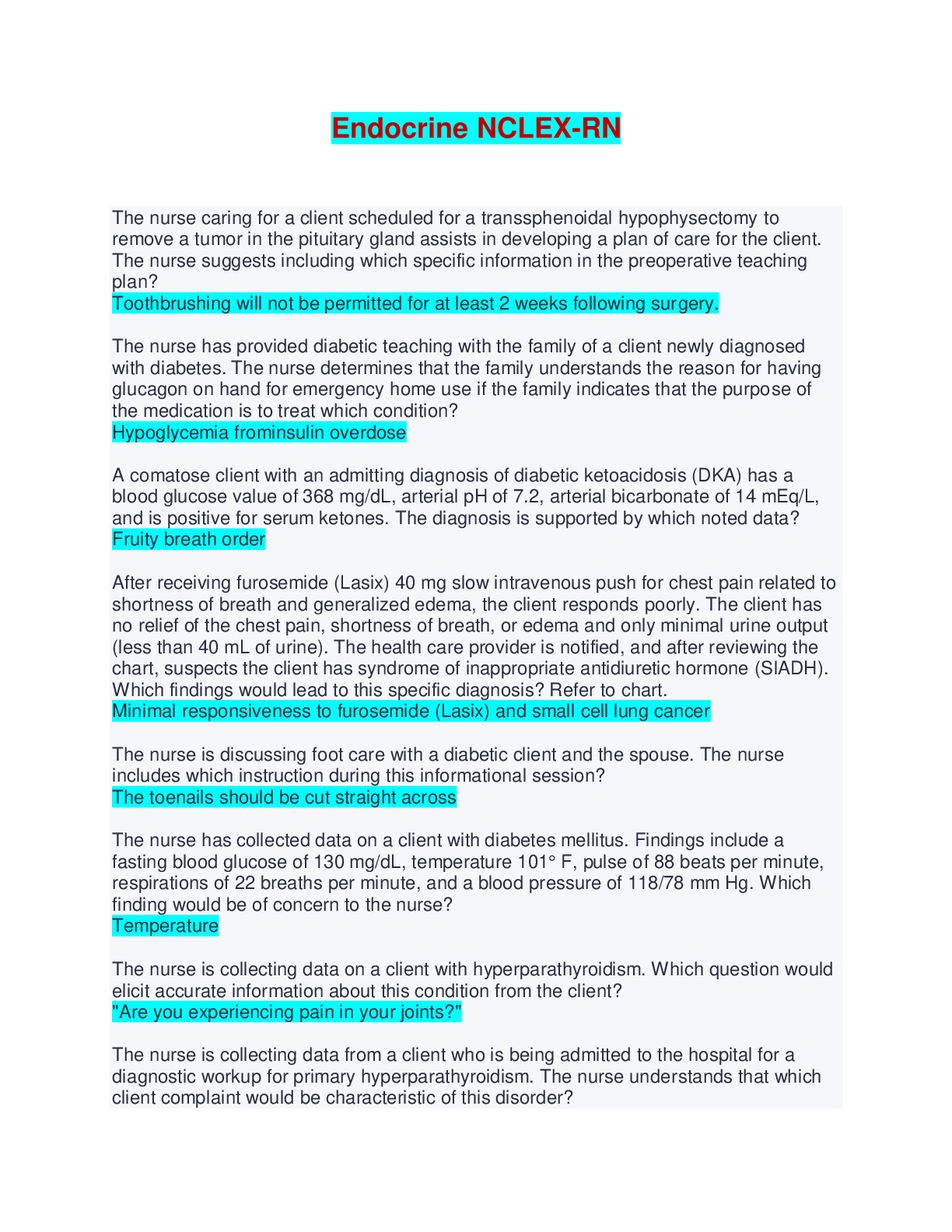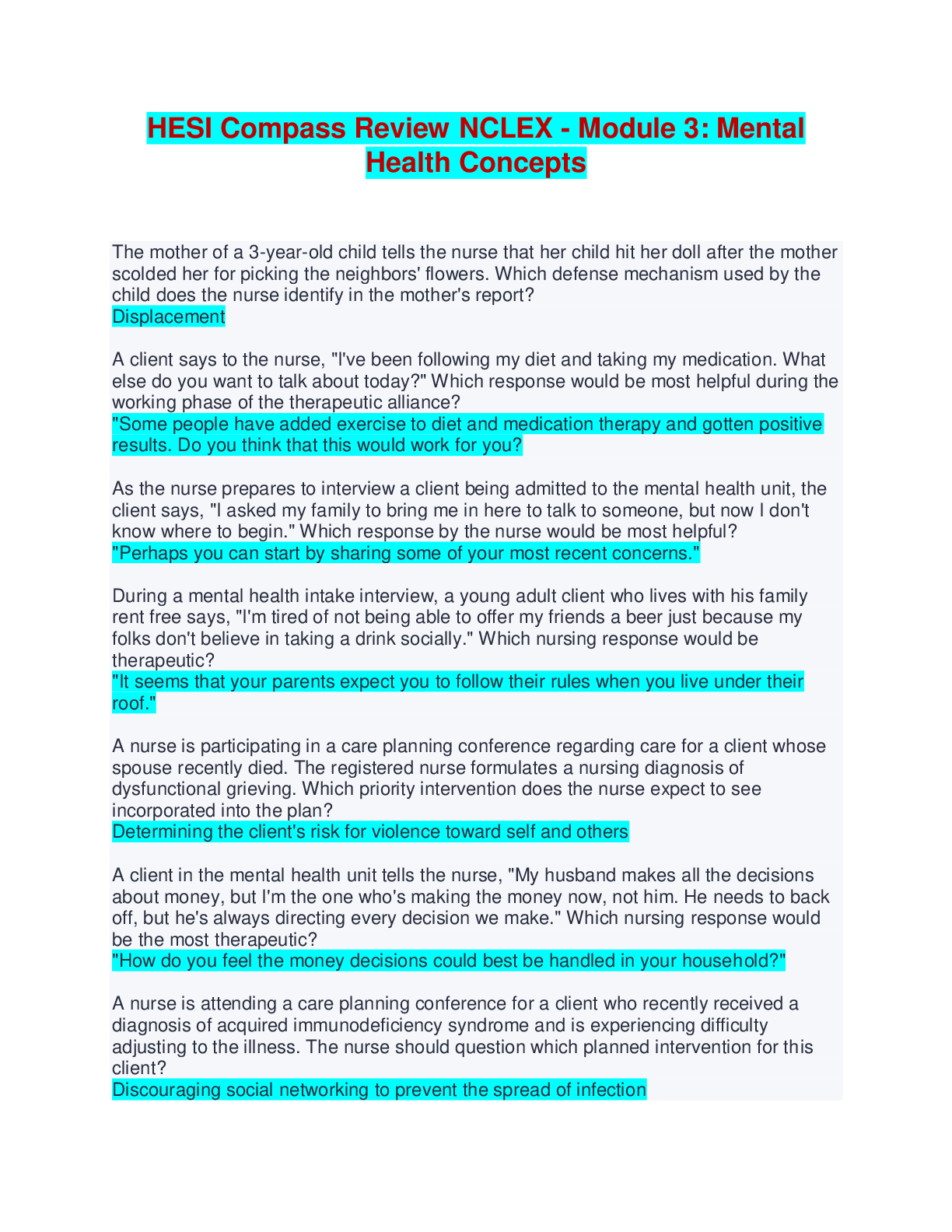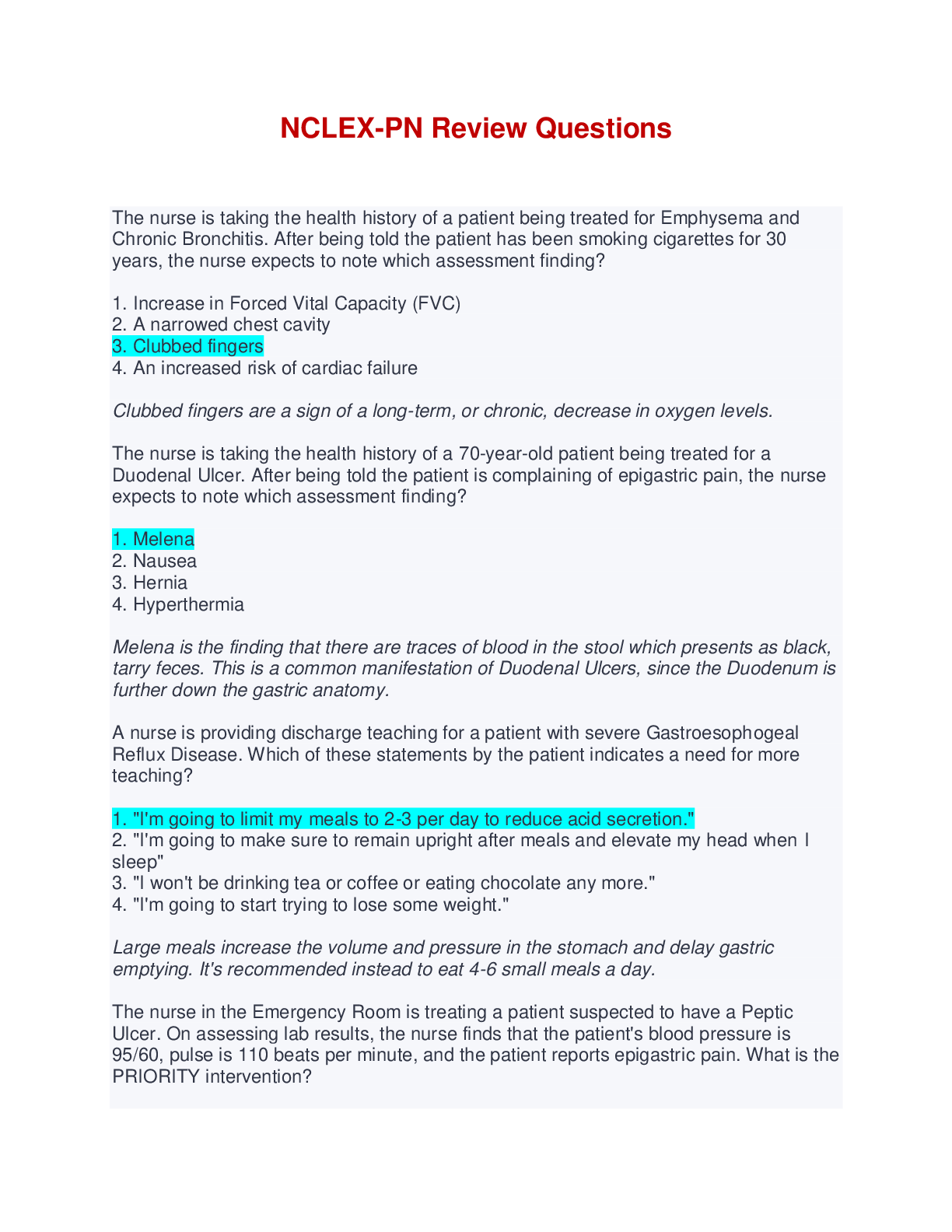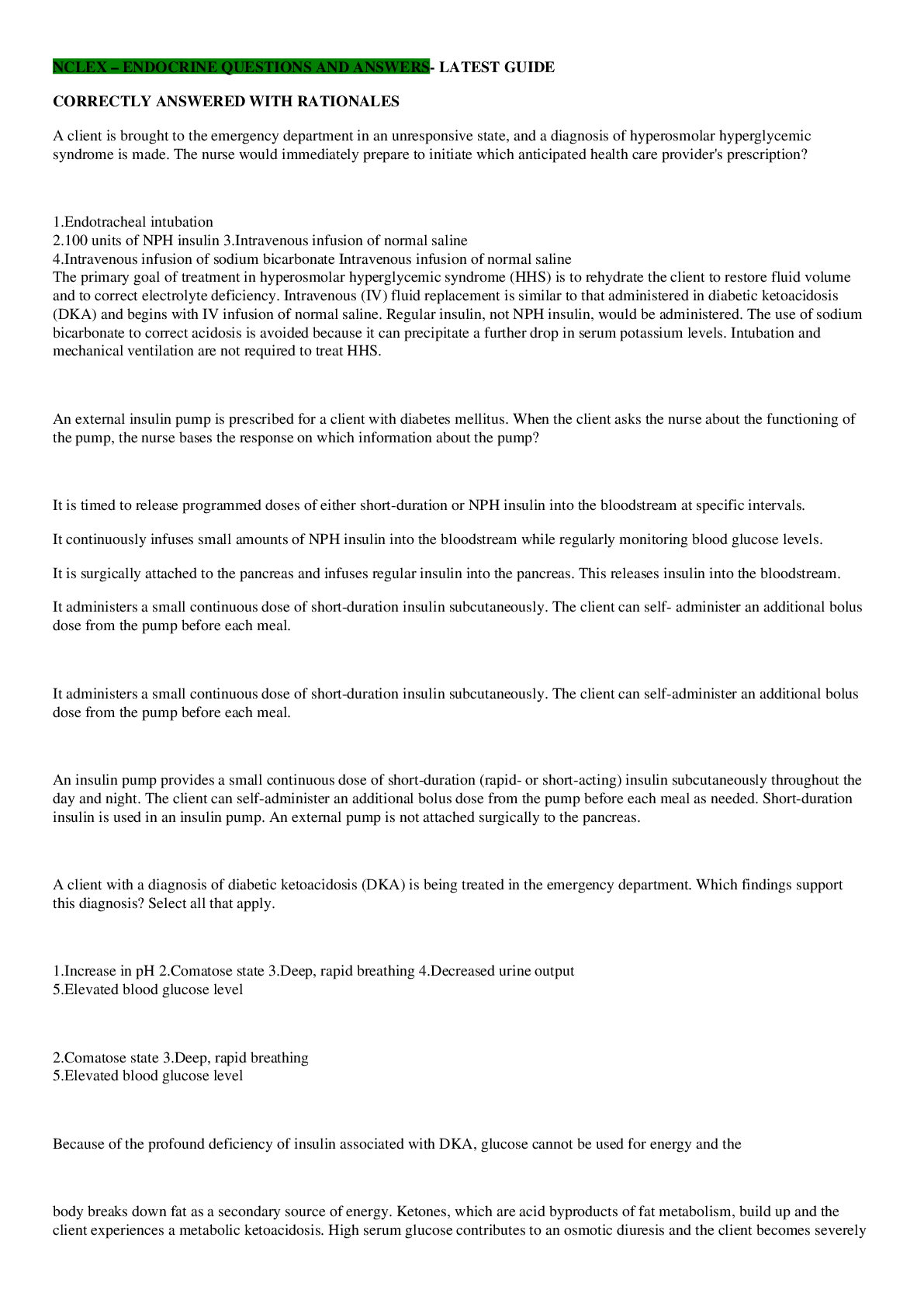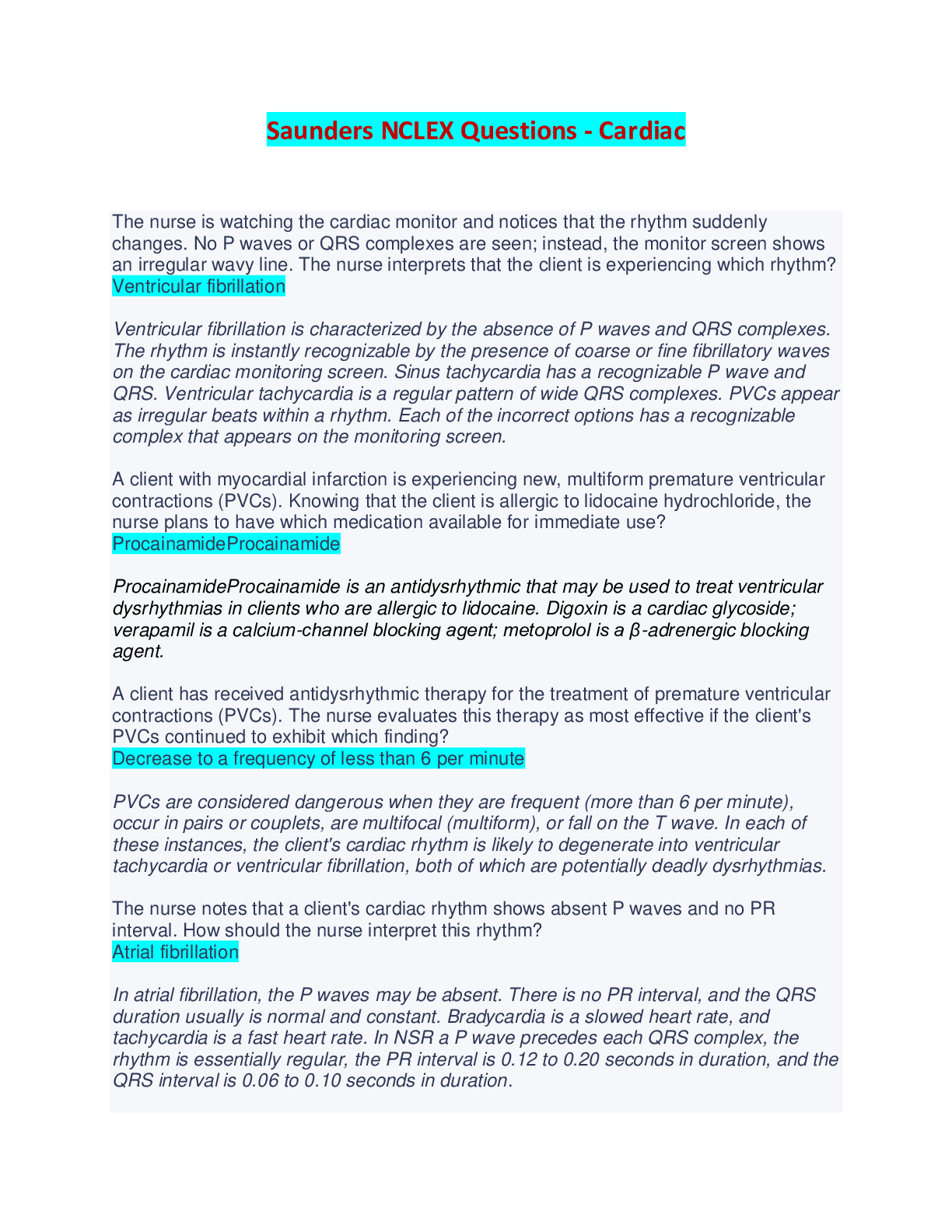NCLEX Cardiovascular Medication Questions - Answered with Rationales
Document Content and Description Below
NCLEX Cardiovascular Medication Questions - Answered with Rationales The nurse reinforces discharge instructions to a postoperative client who is taking warfarin sodium (Coumadin). Which statement ma... de by the client reflects the need for further teaching? A. "I will take my pills every day at the same time." B. "I will be certain to avoid alcohol consumption." C. "I have already called my family to pick up a Medic-Alert bracelet." D. "I will take Ecotrin (enteric-coated aspirin) for my headaches because it is coated." Ecotrin is an aspirin-containing product and should be avoided. Alcohol consumption should be avoided by a client taking warfarin sodium. Taking prescribed medication at the same time each day increases client compliance. The Medic-Alert bracelet provides health care personnel emergency information. A client is receiving digoxin (Lanoxin) daily. The nurse suspects digoxin toxicity after collecting data noting which signs and symptoms? Select all that apply. A. Visual disturbances B. Nausea and vomiting C. Serum digoxin level of 2.3 ng/mL D. Serum potassium level of 3.9 mEq/L E. Apical pulse rate of 63 beats per minute Signs and symptoms of digoxin toxicity include gastrointestinal signs, bradycardia, visual disturbances, and hypokalemia. A therapeutic serum digoxin level ranges from 0.5 to 2 ng/mL. The serum potassium level should be 3.5 mEq/L or higher. The apical pulse must be 60 or higher beats per minute. Heparin sodium is prescribed for the client. Which laboratory result indicates that the heparin is prescribed at a therapeutic level? A. Prothrombin time (PT) of 21 seconds B. Thrombocyte count of 100,000 cells/mm3 C. International normalized ratio (INR) of 2.3 D. Activated partial thromboplastin time (aPTT) of 55 seconds The aPTT will assess the therapeutic effect of Heparin sodium. The PT and INR will assess for the therapeutic effect of warfarin sodium (Coumadin). A decreased thrombocyte count can cause bleeding. The nurse is monitoring a client who is taking propranolol (Inderal LA). Which data collection finding would indicate a potential serious complication associated with propranolol? A. The development of complaints of insomnia B. The development of audible expiratory wheezes C. A baseline blood pressure of 150/80 mm Hg, followed by a blood pressure of 138/72 mm Hg after two doses of the medication D. A baseline resting heart rate of 88 beats/min, followed by a resting heart rate of 72 beats/min after two doses of the medication Audible expiratory wheezes may indicate a serious adverse reaction: bronchospasm. β-Blockers may induce this reaction, particularly in clients with chronic obstructive pulmonary disease or asthma. Normal decreases in blood pressure and heart rate are expected. Insomnia is a frequent mild side effect and should be monitored. Isosorbide mononitrate (Imdur) is prescribed for a client with angina pectoris. The client tells the nurse that the medication is causing a chronic headache. Which action should the nurse suggest to the client? A. Cut the dose in half. B. Discontinue the medication. C. Take the medication with food. D. Contact the health care provider (HCP). Isosorbide mononitrate is an antianginal medication. Headache is a frequent side effect of isosorbide mononitrate and usually disappears during continued therapy. If a headache occurs during therapy, the client should be instructed to take the medication with food or meals. It is not necessary to contact the HCP unless the headaches persist with therapy. It is not appropriate to instruct the client to discontinue therapy or adjust the dosages. A client is diagnosed with an acute myocardial infarction and is receiving tissue plasminogen activator, alteplase (Activase, tPA). Which action is a priority nursing intervention? A. Monitor for renal kidney failure. B. Monitor psychosocial status. C. Monitor for signs of bleeding. D. Have heparin sodium available. Tissue plasminogen activator is a thrombolytic. Hemorrhage is a complication of any type of thrombolytic medication. The client is monitored for bleeding. Monitoring for renal failure and monitoring the client's psychosocial status are important but are not the most critical interventions. Heparin is given after thrombolytic therapy, but the question is not asking about follow-up medications. A client with coronary artery disease complains of substernal chest pain. After checking the client's heart rate and blood pressure, the nurse administers nitroglycerin, 0.4 mg, sublingually. After 5 minutes, the client states, "My chest still hurts." Which appropriate actions should the nurse should take? Select all that apply. A. Call a code blue. B. Contact the registered nurse. C. Contact the client's family. D. Collect more data on the client's pain level. E. Check the client's blood pressure. F. Administer a second nitroglycerin, 0.4 mg, sublingually. The usual guideline for administering nitroglycerin tablets for a hospitalized client with chest pain is to administer one tablet every 5 minutes PRN for chest pain, for a total dose of three tablets. The registered nurse should be notified of the client's condition, who will then notify the health care provider immediately. In this situation, because the client is still complaining of chest pain, the nurse would administer a second nitroglycerin tablet. The nurse would assess the client's pain level and check the client's blood pressure before administering each nitroglycerin [Show More]
Last updated: 2 years ago
Preview 1 out of 38 pages
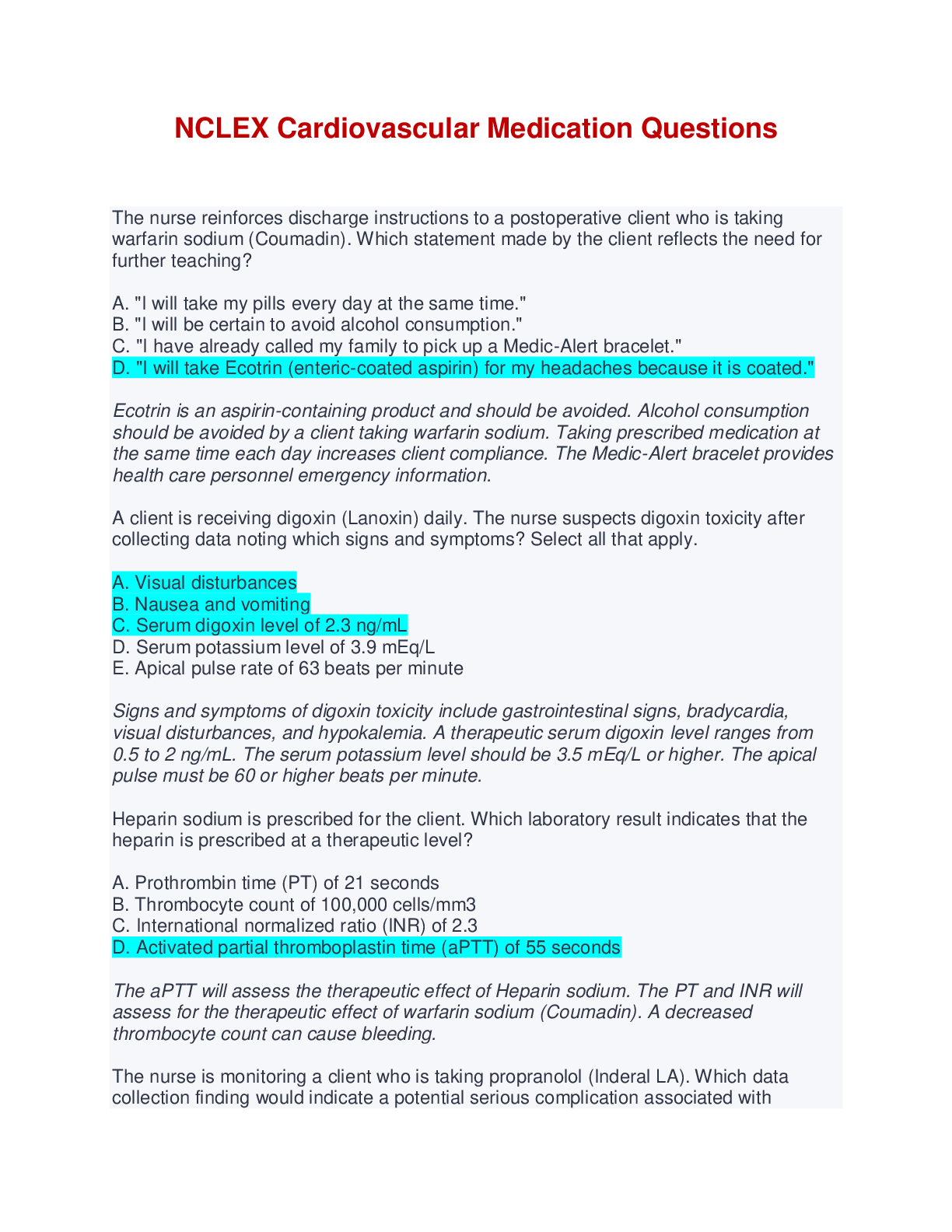
Buy this document to get the full access instantly
Instant Download Access after purchase
Buy NowInstant download
We Accept:

Reviews( 0 )
$20.00
Can't find what you want? Try our AI powered Search
Document information
Connected school, study & course
About the document
Uploaded On
Mar 26, 2023
Number of pages
38
Written in
Additional information
This document has been written for:
Uploaded
Mar 26, 2023
Downloads
0
Views
122




